Discovering French goat cheese
“I’m excited to share my incredible journey into the world of French goat cheese with you. Three intense days of exploration, uncovering all the secrets behind this remarkable French cheese!”
– this article is sponsored by ANICAP, the interprofessional organization of the French goat dairy industry.
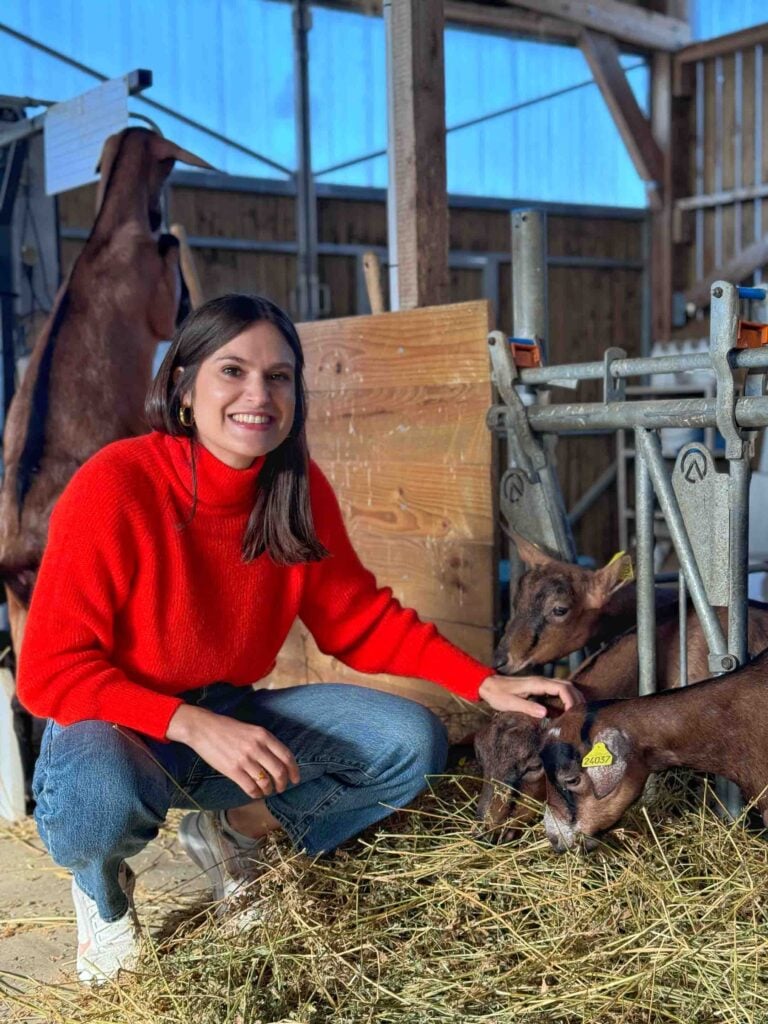
Ever since I was a little girl, I’ve been a big fan of goat’s cheese, whether in its fresh, ripened or ashed form. When I learned that I was going to take part in a trip devoted entirely to French goat cheese, organized by the ANICAP the interprofessional organization of the French goat dairy industry, I was super excited! Here’s a summary of my trip, where I explored the history, varieties, and even the secrets behind crafting this unique cheese.
The oldest cheese production: goat cheese
Goat’s cheese is one of the oldest cheese production in the world, long before cow’s cheese. Why? Because goats were once easier for nomads to raise, being small and adaptable animals. This makes them one of the very first cheeses made by mankind.
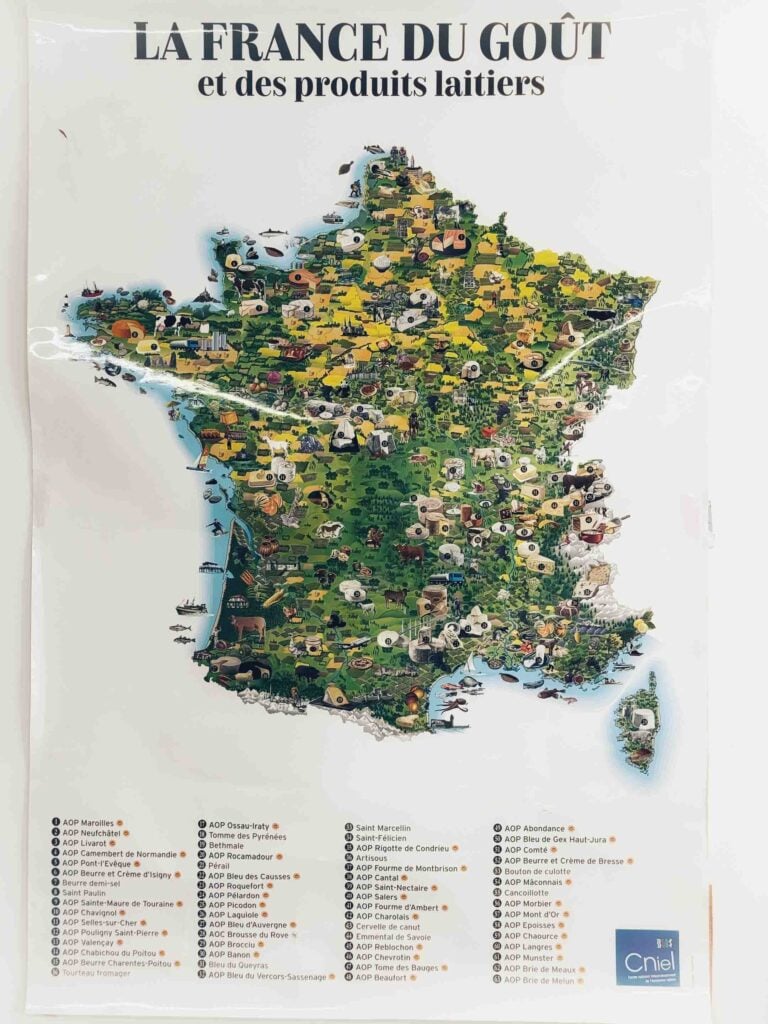
Today, France is the world leader in goat’s milk and cheese production. The country’s geography, with regions ranging from the Atlantic to the Pyrenees, as well as the Paris region where we were, offers a variety of soils and climates that directly influence the quality of the milk, bringing a unique wealth of flavors to the cheeses.
Visit a goat cheese farm: immersion in Tancrou
My journey began with a visit to Bertin Moret’s family farm in Tancrou, Seine-et-Marne. Now in its 5th generation, this farm is a real treasure trove, producing goat’s milk cheeses.

Bertin, who now runs the farm, took over the family business with a resolutely ecological approach. With his 230 goats, he took us through the entire process, from animal care to cheese-making. An artisanal production, respectful of tradition, which bears witness to the exceptional know-how of French producers.
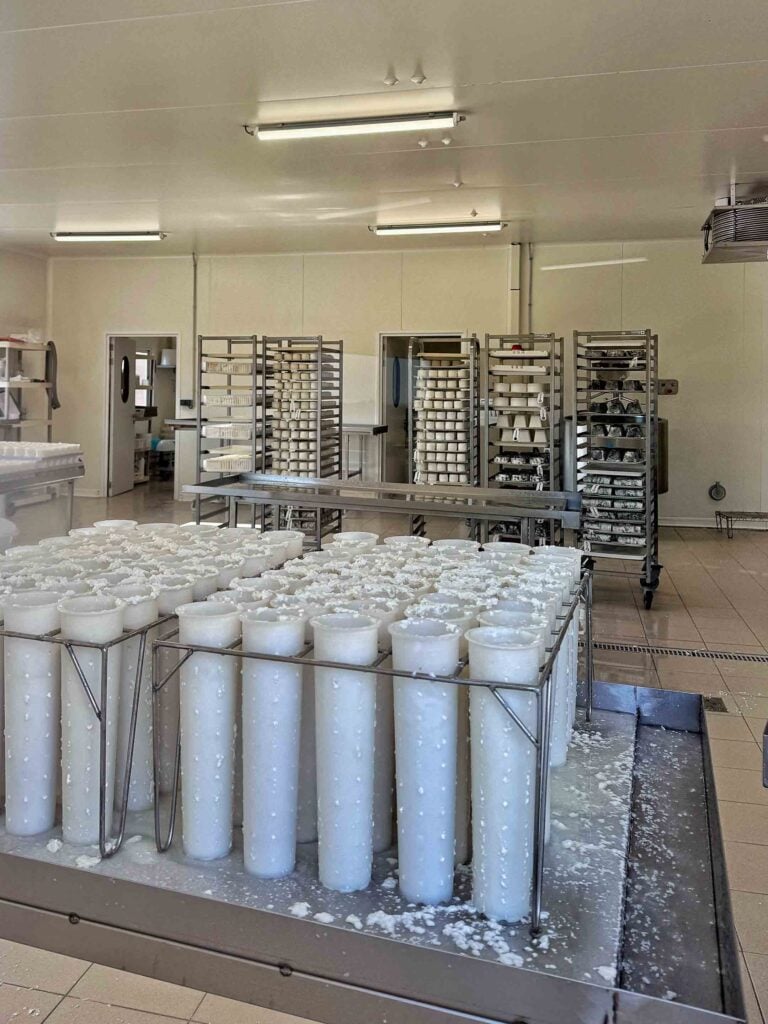
Goats: curious and affectionate animals
The day started with an encounter with the goats—fascinating, curious creatures with a close connection to humans. We observed as they were fed before heading out for a stroll in the open air.

Next, we visited the milking parlour. During peak season, each goat can produce up to 4 liters of milk per day. This milk is essential for making high-quality cheeses, its richness shaped by the goats’ diet and the natural environment around them.

Farmhouse goat cheese tasting
After a tour of the milking parlour, Bertin treated us to a tasting of various cheeses produced on site.
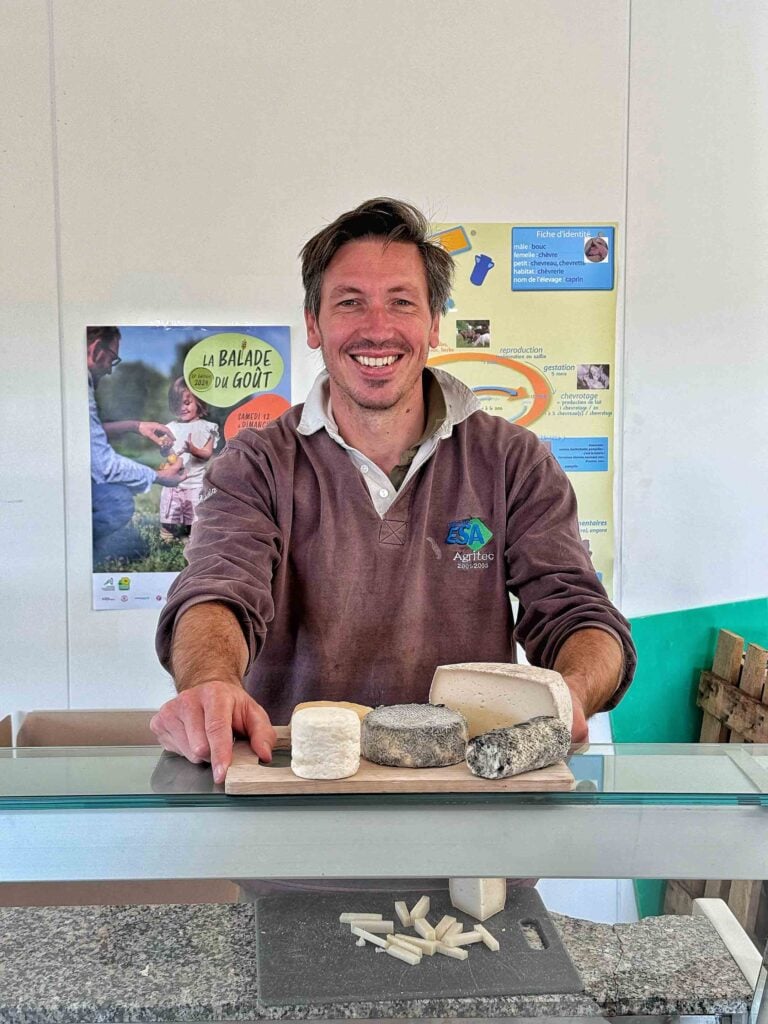
Cheeses vary not only by their maturing period but also by the production methods used. The diversity of French goat cheeses is astonishing—they come in a wide range of shapes, textures, and flavors, from the freshest to the most mature, and from the mildest to the most robust.
Did you know that it takes about 1 liter (4 cups) of goat’s milk to make one crottin de chèvre?
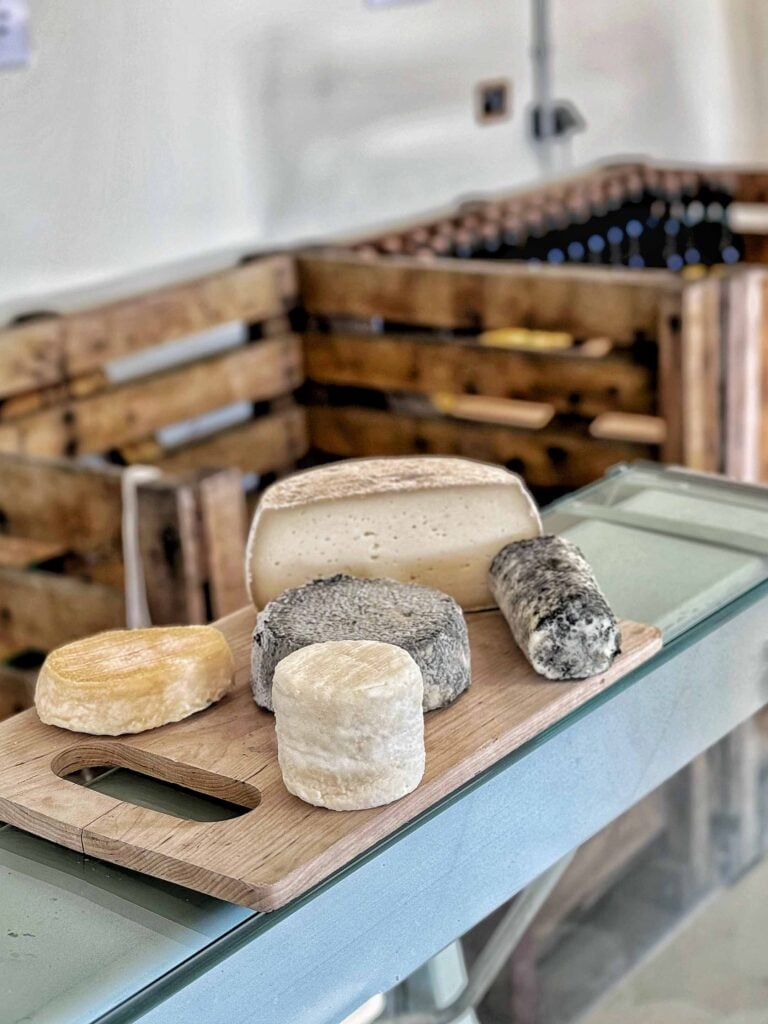
Learn to make your own goat’s cheese
The next day, I went to Paroles de Fromagers to learn how to make my own goat’s cheese. Cheese-making is a fascinating process, combining ancestral know-how and chemistry.
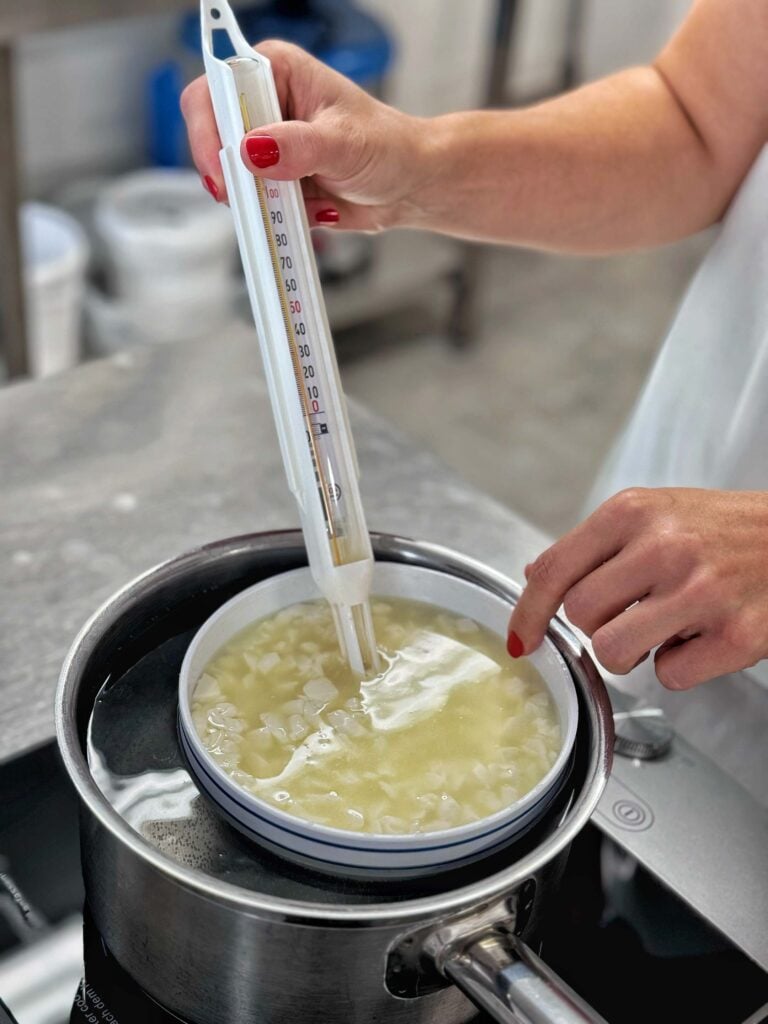
Pierre, a cheese enthusiast and former winemaker, explained everything to us with incredible energy! We started by heating the goat’s milk, then adding lactic ferments and animal rennet to curdle the milk. Once the milk had coagulated, we cut the mass to remove as much whey as possible.
After draining in a cloth, we had a fresh cheese ready to eat in less than two hours.
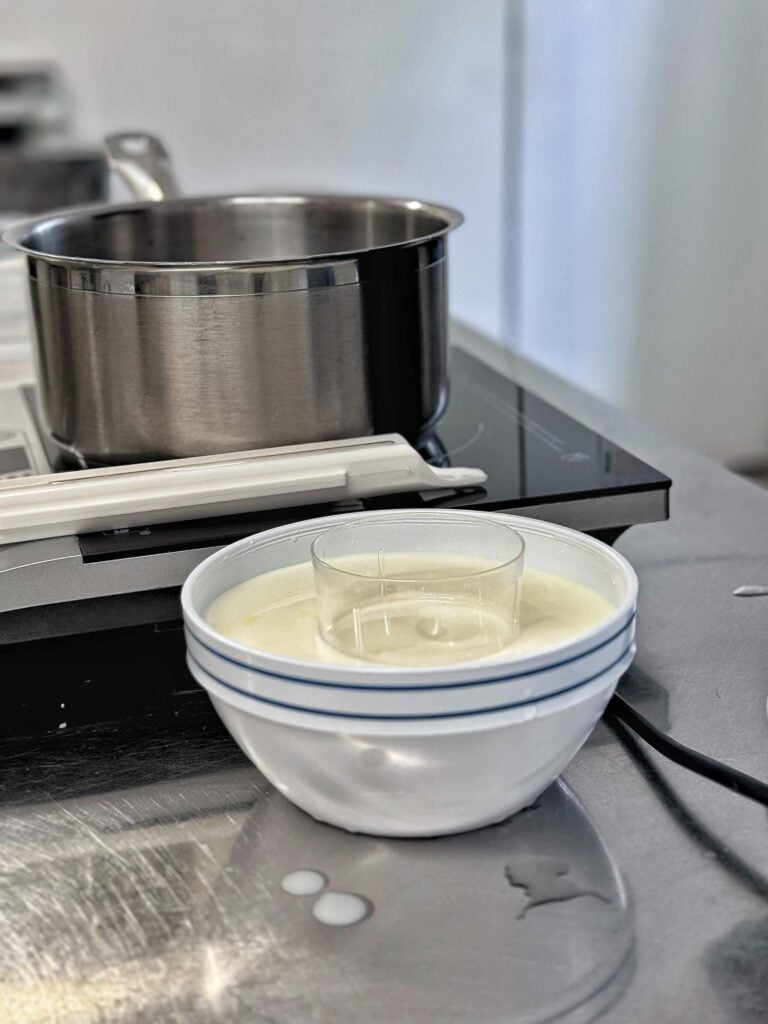
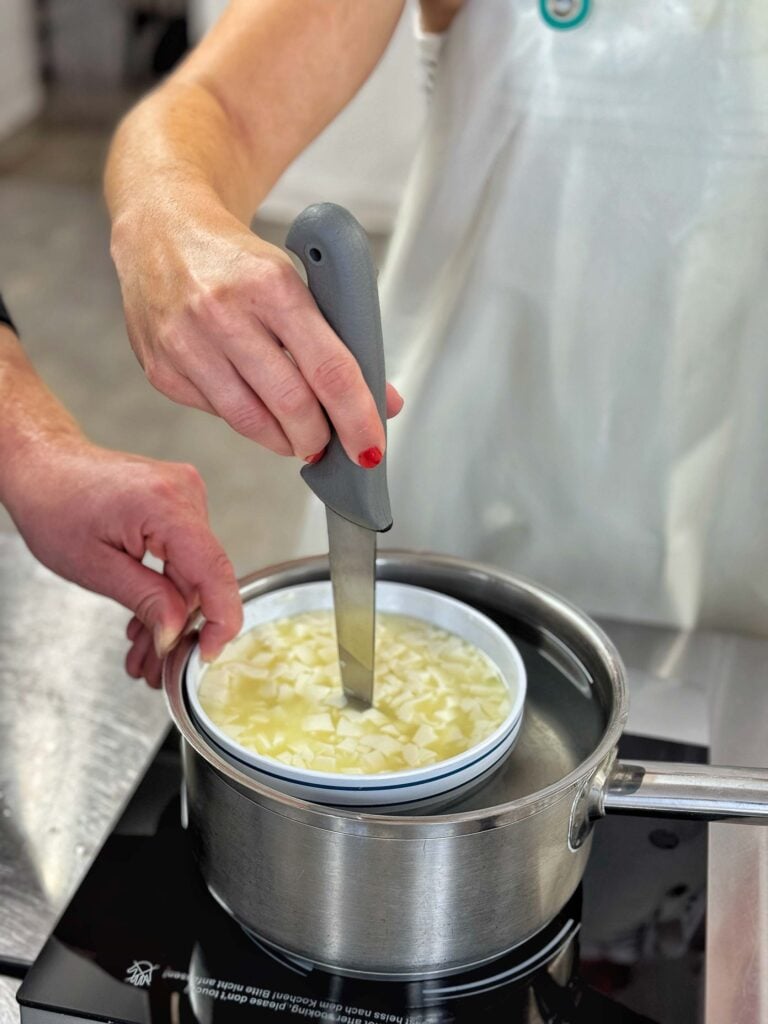

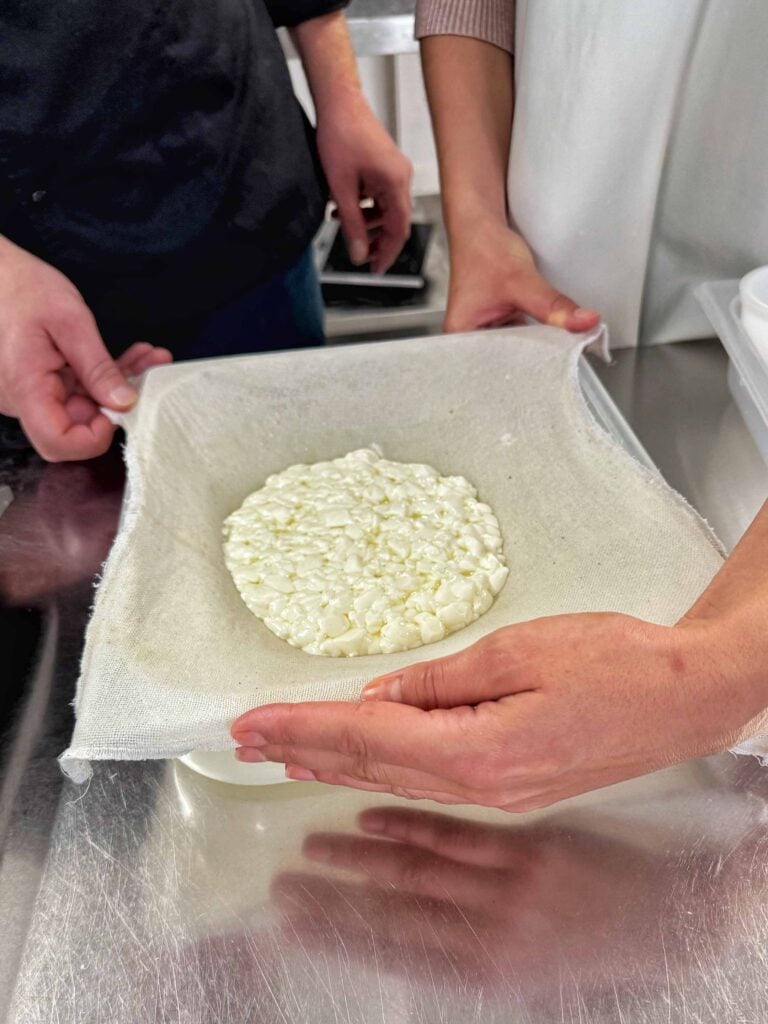
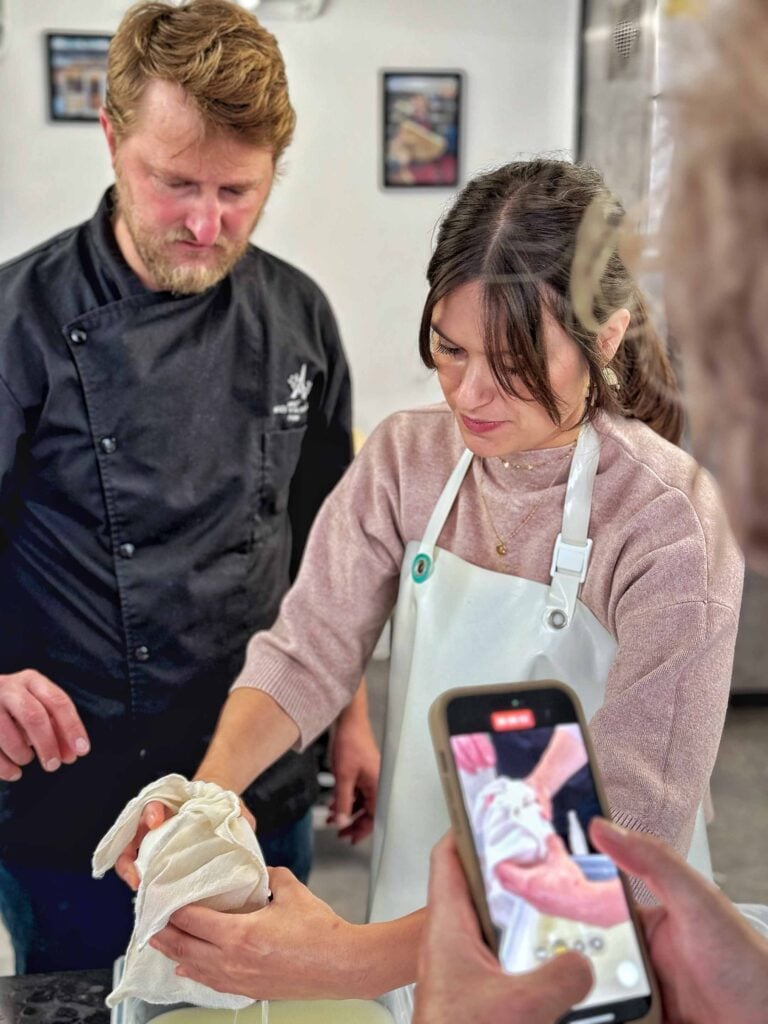

Tasting of cheeses and other specialities
During this workshop, I also had the chance to taste several varieties of goat’s cheese, each as delicious as the next:
- Fresh goat’s cheese, a classic that I like to use in my recipes.
- Saint-Maure de Touraine AOP, recognizable by its log shape, ashy surface and straw inside,
- Chavignol AOP, absolutely divine with quince jelly.
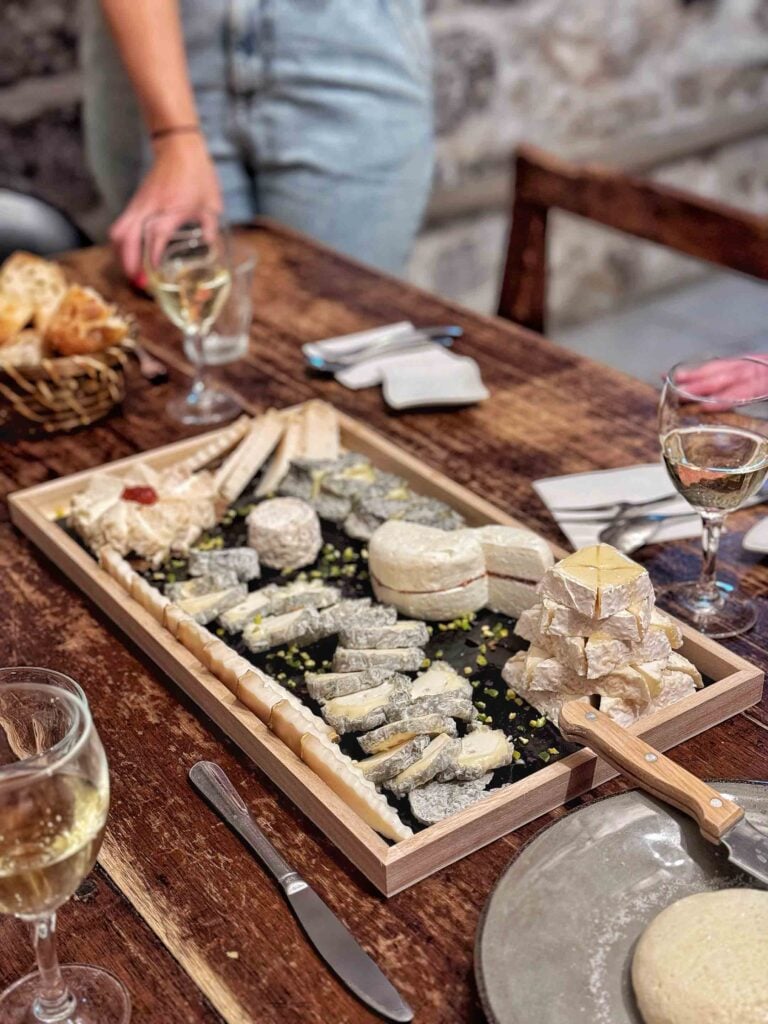
These cheeses testify not only to the diversity of tastes, but also to the commitment of producers to maintaining an incomparable level of quality. France is truly the country par excellence for goat cheese production.
Cooking goat’s cheese
After learning how to make cheese, I had the great privilege of taking part in a goat’s cheese cooking class led by Florence Campain. The menu was entirely dedicated to this product, with recipes that were both simple and original.
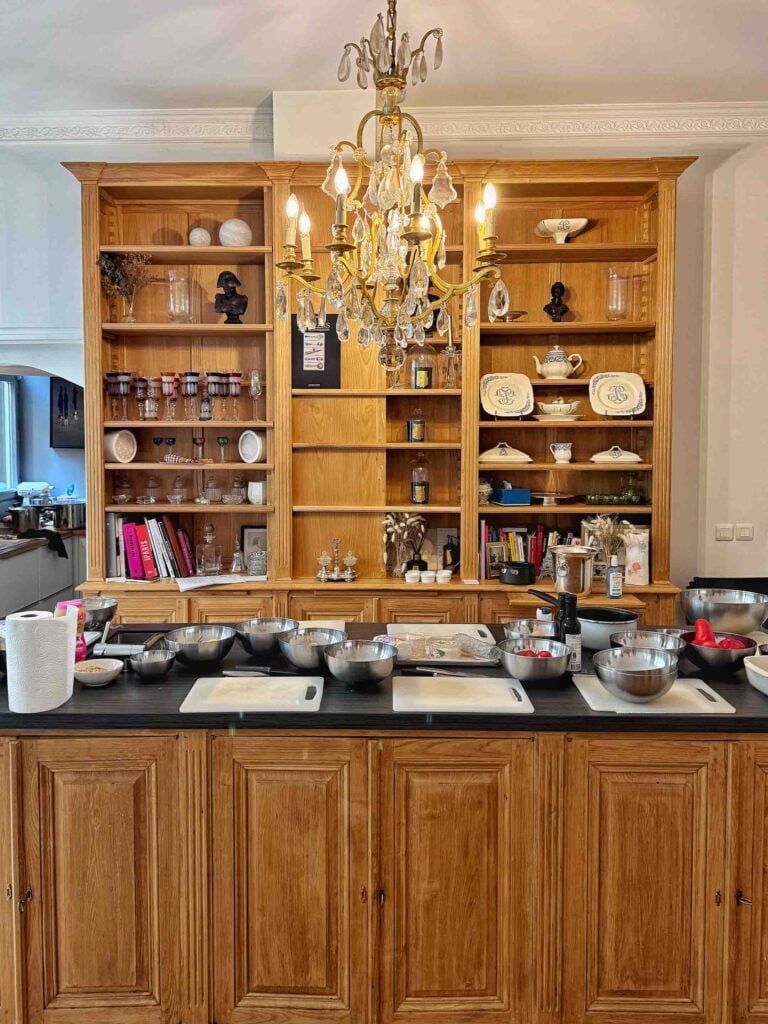
Here’s what we’ve prepared:
- Macarons filled with goat’s cheese and apple, perfect for the aperitif,
- Filo pastry or “aumônière” topped with Chabichou du Poitou AOP, spinach and cherry tomatoes, a light and refined starter,
- Vegetables stuffed with Saint-Maure de Touraine AOP, a delicious vegetarian alternative to stuffed veggies,
- Feuilletés with fresh goat’s cheese and vanilla Chantilly (whipped cream) , a fine-dining dessert with a touch of elegance.
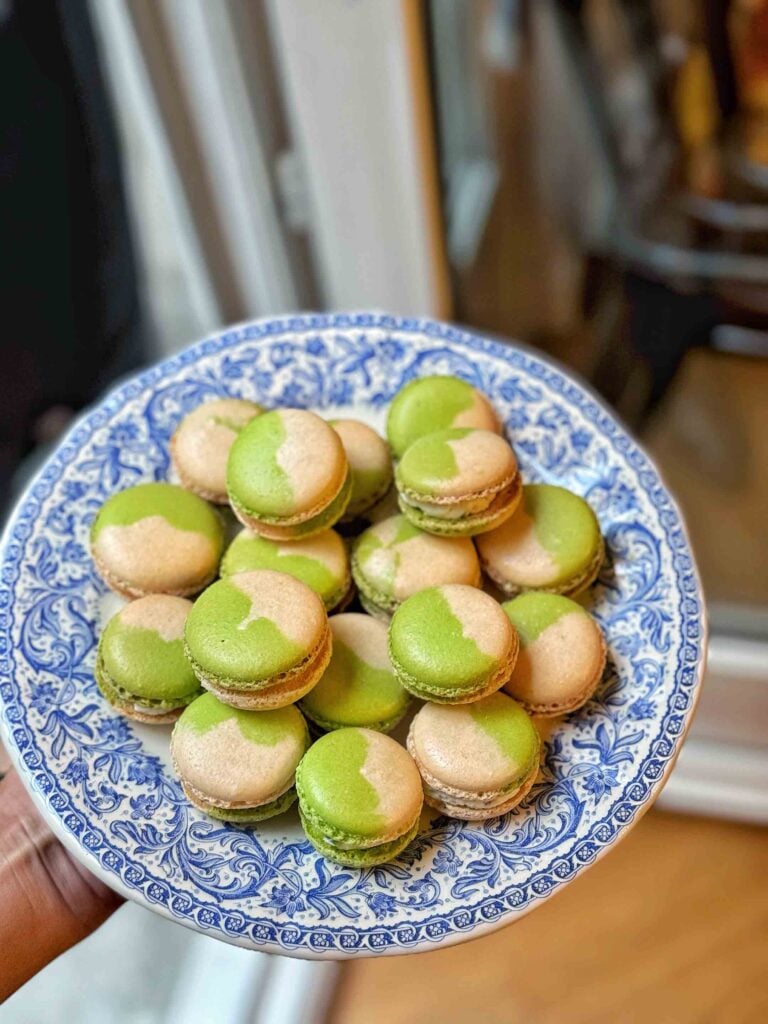
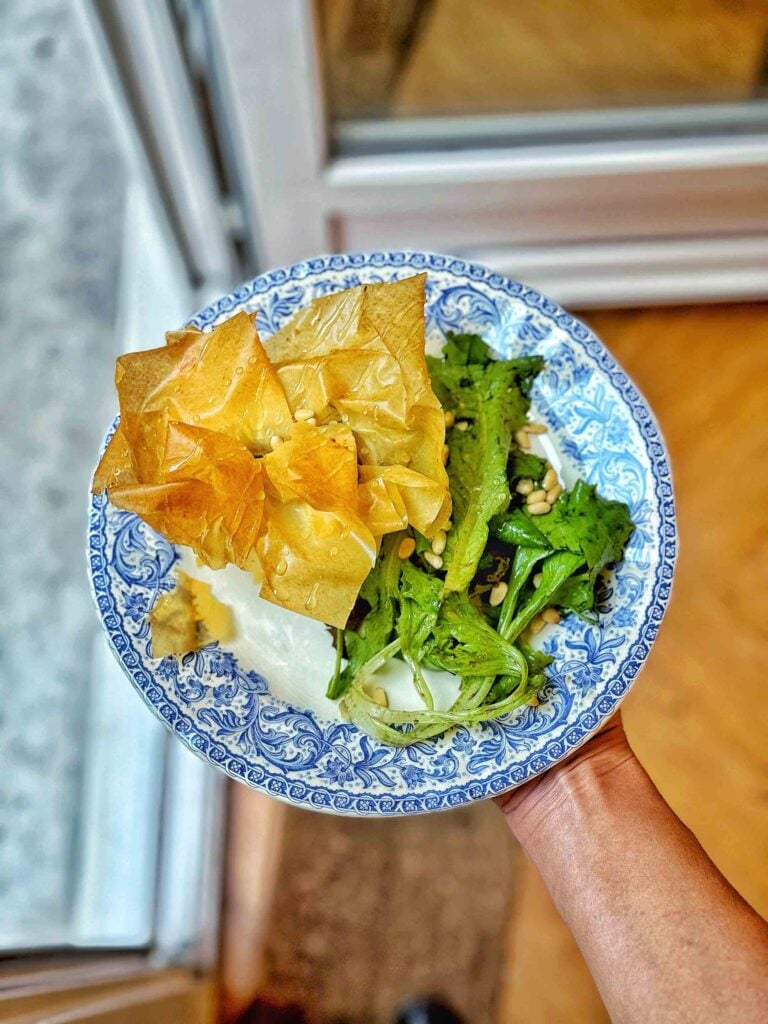
My favorites
I have to say that the goat’s cheese and vanilla Chantilly cream was quite simply a revelation. Combined with the goat-apple macarons, it was a hit! I also loved the aumônière, with its combination of crunchy and melt-in-the-mouth textures.
Conclusion: a rewarding gourmet adventure
This trip around French goat’s cheese was much more than just a culinary discovery: it was an immersion in a rich, living heritage. Not only did I learn how cheese is made, but I also tasted exceptional varieties and discovered new recipes to incorporate into my everyday cooking.
This trip gave me a better understanding of why French goat cheese is so unique. It’s based on three essential pillars: quality, thanks to respectful production techniques and a generous natural environment; diversity, with an impressive range of products (there’s something for everyone!); and last but not least, tradition, perpetuated by passionate producers who spread this know-how around the world.
I hope this article has inspired you to eat French goat’s cheese more regularly. And if you’re looking for a recipe, here are a few ideas:
- Fig and Fresh Goat Cheese Salad
- Goat cheese, Apple & Pear Filo Parcels
- Fig and Goat Cheese Toast
- Oven Roasted Peppers and Goat Cheese
- Goat Cheese and Apple Puff Pastry
- Quiche with Green Asparagus and Fresh Goat Cheese
- Kale, Goat Cheese and Hazelnut Toast
- Leek, Goat Cheese and Bacon Quiche
Don’t hesitate to leave me a comment, it always makes me happy!

You can also find me on Instagram, Facebook and TikTok to see behind the scenes of my blog